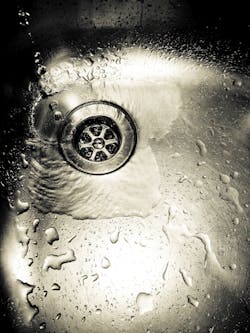EPA to Support Monitoring of Drinking Water Contaminants
The U.S. Environmental Protection Agency (EPA) published a list of 28 chemicals and two viruses that approximately 6,000 public water systems will monitor from 2013 to 2015 as part of the agency’s unregulated contaminant-monitoring program, which collects data for contaminants suspected to be present in drinking water, but that do not have health-based standards set under the Safe Drinking Water Act.
EPA will spend more than $20 million to support the monitoring, the majority of which will be devoted to assist small drinking water systems with conducting the monitoring. The data collected under the Unregulated Contaminant Monitoring Rule 3 (UCMR 3) will inform EPA about the frequency and levels at which these contaminants are found in drinking water systems across the United States and help determine whether additional protections are needed to ensure safe drinking water for Americans. State participation in the monitoring is voluntary. EPA will fund small drinking water system costs for laboratory analyses, shipping and quality control.
The list of contaminants to be studied includes total chromium and hexavalent chromium, also known as chromium-6. Addressing hexavalent chromium in drinking water is a priority for EPA Administrator Lisa P. Jackson. In January 2011, EPA issued guidance to all water systems on how to assess the prevalence of hexavalent chromium and in the March 2011 proposal for UCMR 3, EPA invited comments on whether the agency should include chromium in the final rule. Public comments received by EPA were strongly supportive of adding total chromium and hexavalent chromium for monitoring.
“The monitoring that will take place will provide EPA with invaluable information about what municipalities are seeing in their drinking water all across the country,” said EPA acting assistant administrator for Water Nancy Stoner. “The results of this multi-year monitoring effort will help inform EPA’s work to ensure Americans receive safe drinking water.”
EPA selected the contaminants by first reviewing the agency’s contaminant candidate list, which highlights priority contaminants that need additional research to support future drinking water protections. The contaminants on the list are known or anticipated to occur in public water systems. However, they are not addressed by existing national drinking water standards. Additional contaminants of concern were selected based on current occurrence research and health-risk factors.
EPA has standards for 91 contaminants in drinking water, and the Safe Drinking Water Act requires that EPA identify up to 30 additional unregulated contaminants for monitoring every five years.
Source: EPA
